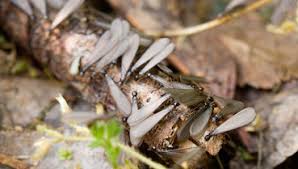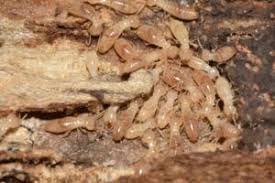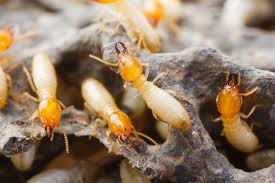10 Simple Techniques For Termite Control For Plants
Termites are found on all continents except Antarctica. The diversity of termite species is reduced in North America and Europe (10 species known in Europe and 50 in North America), but is high in South America, in which over 400 species are known.34 Of the 3,000 termite species currently categorized, 1,000 are found in Africa, where mounds are extremely abundant in certain regions.

As a result of their soft cuticles, termites do not inhabit cold or cool habitats.36 There are three ecological forms of termites: dampwood, drywood and subterranean. Dampwood termites are found only in coniferous forests, and drywood termites are found in hardwood forests; subterranean termites live in widely diverse regions.34 One species in the drywood category is that the West Indian drywood termite (Cryptotermes brevis), which is an invasive species in Australia.37.
What Does Termite Control For Plants Do?
Termites are usually modest, measuring between 4 to 15 millimetres (0.16 to 0.59Â in) in length.34 The largest of extant termites are the queens of those species Macrotermes bellicosus, measuring around over 10 centimetres (4Â in) in length.38 Another giant termite, the extinct Gyatermes styriensis, thrived in Austria during the Miocene and had a wingspan of 76 millimetres (3.0Â in) and a body length of 25 millimetres (0.98Â in).39note 1.
Most worker and soldier termites are blind because they do not have a pair of eyes. But some species, such as Hodotermes mossambicus, have compound eyes that they utilize for orientation and also to distinguish sunlight from moonlight.40 The alates (winged males and females) have eyes along with lateral ocelli.
Termite antennae have a number of functions such as the sensing of touch, taste, odours (including pheromones), heat and vibration. The three basic segments of a termite antenna include a scape, a pedicel (typically shorter than the scape), and the flagellum (all segments beyond the scape and pedicel). The mouth parts contain a maxillae, a labium, and a set of mandibles.
Consistent with all insects, the anatomy of the termite thorax consists of 3 segments: the prothorax, the mesothorax and the metathorax. Each segment contains a set of legs. On alates, the wings are at the mesothorax and metathorax. The mesothorax and metathorax have well-developed exoskeletal plates; the prothorax has smaller plates. .
Examine This Report about Termite Control For Trees
Termites have a ten-segmented abdomen with two plates, the tergites and also the sternites. The tenth abdominal segment has a pair of short cerci.45 You can find ten tergites, of which nine are wide and one is elongated. The reproductive organs are similar to those in cockroaches but are more simplified. For example, the intromittent organ is not present in penile alates, and the semen is immotile or aflagellate.

The non-reproductive castes of termites are wingless and rely solely on their six legs for locomotion. The alates fly only for a short amount of time, so they also rely on their own legs. The appearance of the legs is similar in each and every caste, but the soldiers have bigger and thicker legs.
The Best Guide To Termite Control For Plants
The number of tibial spurs on an individual's leg varies. Some species of termite have an arolium, located between the claws, which is present in species that scale on smooth surfaces but is absent in many termites.49.
Unlike in ants, the hind-wings and fore-wings are of equivalent length.2 the majority of the time, the alates are poor flyers; their technique is to launch themselves in the air and fly in a random direction. Studies indicate that in comparison to larger termites, smaller termites cannot fly long distances. When a termite is in flight, its wings remain in a right angle, and when the termite is at rest, its wings remain parallel to the body.51.

Worker termites undertake the most labour within the colony, being responsible for click this link foraging, food storage, and brood and nest maintenance.53 Employees are tasked with the digestion of cellulose in meals and are thus the most likely caste to be found in infested wood. The procedure for worker termites feeding other nestmates is popularly known as trophallaxis.
More About Termite Control For Trees
Some termite species do not have a legitimate worker caste, instead relying on nymphs that do the same job without differentiating as a separate caste.53.